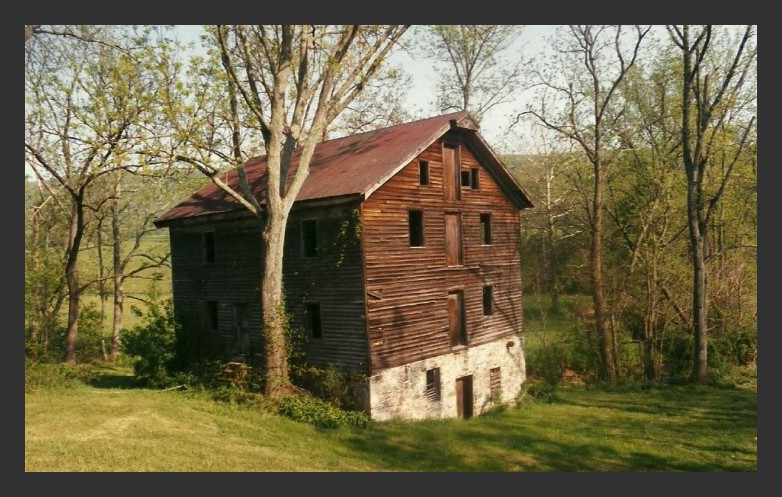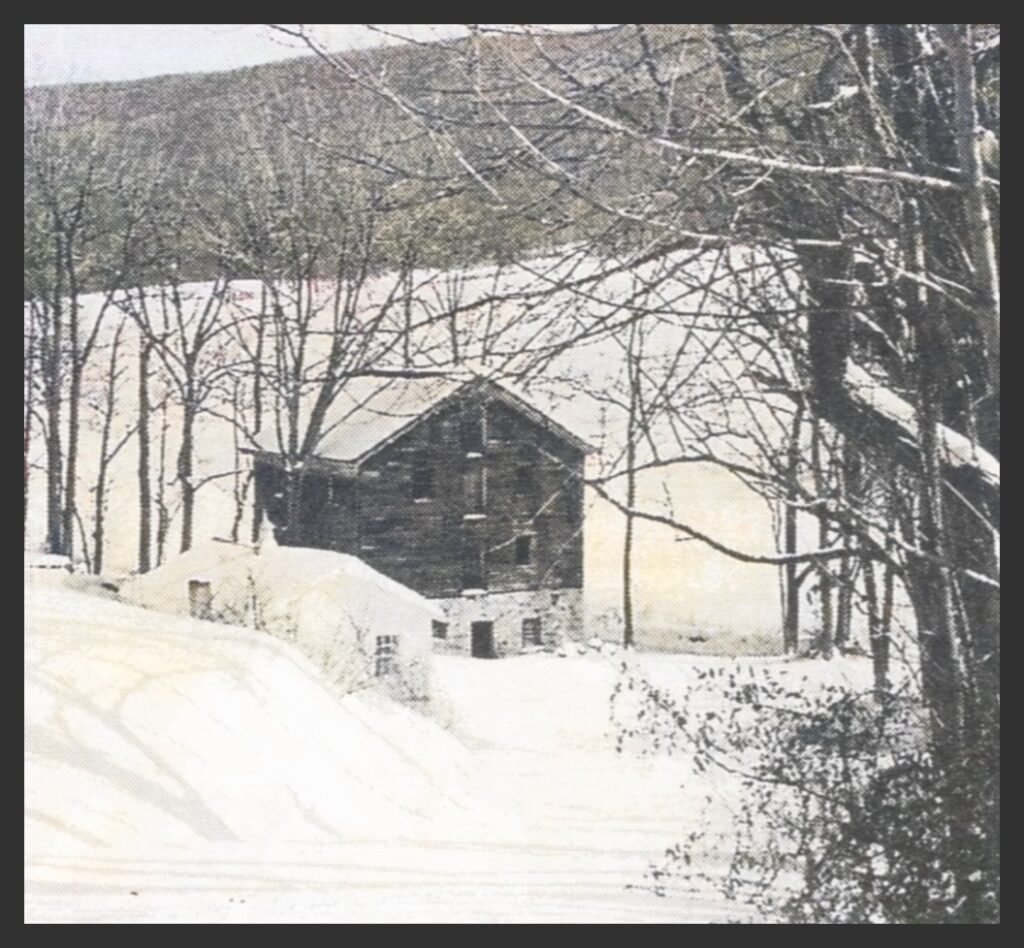A story of an old gristmill in the Lykens Valley appeared in the Harrisburg Patriot on April 10, 1981. The story featured a photograph of Charles A. Sitlinger, retired dairyman of Specktown, Lykens Township, Dauphin County, Pennsylvania, working in front of an old gristmill on his property that one day he hoped could be restored. The photo of Sitlinger is not reproduced with this blog post because the newspaper reproduction was of poor quality. Instead, a previously posted color photo (above) is re-posted, which was then identified as the Jacob Huber Gristmill.
The second photo posted here, the gristmill in the snow (above), was also previously published, but as the Isaac Sitlinger gristmill. He was identified as the builder of the mill, some time after he purchased the property in 1874.
While the story that appeared in the Patriot has some conflicting information about the origin of the mill and the owners of the property, it is worth presenting it here because it relates some memories of Charles Albert Sitlinger (1900-1984) and his wife Sally Olive [Weiss] Sitlinger (1889-1981) during the time they owned the farm.
GRISTMILL GROUND GRAIN AT THIS GRATZ AREA FARM
The farm of Mr. and Mrs. Charles A. Sitlinger in [Specktown] Lykens Township….
The farm buildings have been used as a grist mill, a sawmill, a blacksmith shop, a dairy, an ice house, and a school. But the farm is remembered best for its gristmill.
It is believed that the mill was built by Daniel A. Good, a local millwright, for Daniel Buffington in 1864, the date carved in the plaster above the main entrance, and ground wheat into flour, under the name “Gratz Mills” for over 50 years.
Custom grinding was done for farmers who brought corn, oats, wheat or barley to the mill and left with feed for their livestock. The mill also supported two seed-cleaning machines which prepared seeds for sewing.
Power for the mill was supplied by a water turbine wheel, which was placed in a horizontal rather than vertical position. The turbine was then connected by either belts or gears to handmade wooden cogs inside the mill.
When Buffington died, the mill was given to his son Irvin, who operated it until 1916, when he moved to Gratz and rented the farm to M. A. Shade, who lived there for two years and used the mill to grind feed for his own livestock.
In 1918 Irvin Buffington sold the farm to the newly wedded Charles Sitlinger and Sally Sitlinger. The mill was not used again, but the Sitlinger’s have removed only one turbine wheel and have insisted that the rest of the mill remain intact in the 63 years since.
At the height of the mill’s productivity, a sawmill was operated nearby. The up-and-down saw was powered by the same race of water, fed by the Little Wiconisco Creek, and a blacksmith shop was maintained on the farm to do repair work for both mills.
Within the boundaries of the farm there was a one-room country school that also served as a Sunday School. The school was abandoned when a larger building was constructed across the street and named the “Gise [or Geise] Schoolhouse.”
The blacksmith shop, the gristmill and the sawmill were in operation before the Sitlingers purchased the farm and started their large dairy business, complete with a milk route.
The business grew and prospered until one Saturday evening in 1945 when lightning struck the barn and it burst into flames. Lost that evening were the barn, shed, livestock, a great deal of farm equipment, the horse-drawn milk wagon, and Sally’s carriage. The Sitlingers bought more equipment, remained in the milk business for three more years, and then sold the route to a dairy in Big Run.
The Sitlingers also operated an icehouse. Every winter the ice on the Little Wiconisco Creek was sawed into huge blocks and packed in saw dust in the icehouse. The stored ice was then sold commercially or used on the farm itself.
Today [1981] Charles is 81 and Sally 91. They still live in their home of 63 years. One grandson plans some day to restore the mill.
In the meanwhile, it serves as a reminder to four generations of Sitlingers of the thriving industries that once were in operation here.
____________________________________________
Note: The winter photograph was first published in a Gratz history in 1997 which also stated that the gristmill was purchased in 1874 by Isaac Sitlinger, the grandfather of Charles A. Sitlinger. Later information obtained around 2010 confirmed that the gristmill was first purchased by a member of the Sitlinger family, Charles A. Sitlinger, in 1918. The information in the 1981 article (above) as to the first owner of the property and the person who actually constructed the gristmill is in conflict with the information obtained around 2010. The byline in the 1981 Harrisburg Patriot article identified Lynn C. Schadle as the author.
Corrections and additional information should be added as comments to this post.

